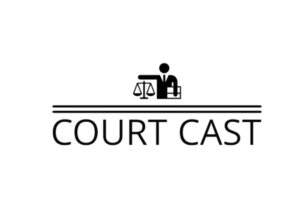Contents
- Introduction
- Text of Section 151
- Objectives
- When Can Courts Exercise Inherent Powers?
- Limitations on the Use of Inherent Powers
- Comparative Analysis
- Application in Different Stages of Proceedings
- Conclusion
- Annexure: Examples and Case Studies
1. Introduction
Section 151 of the Code of Civil Procedure, 1908 (CPC) confers inherent powers on the civil courts to make such orders as may be necessary for the ends of justice or to prevent the abuse of the process of the court. This provision is an acknowledgment that it is impossible to lay down a fixed rule to cater to every possible contingency. This Practice Note elucidates the various dimensions and applications of Section 151 of the CPC, in the context of Indian jurisprudence.
2. Text of Section 151
Section 151 of CPC reads as follows:
“Saving of inherent powers of Court.—Nothing in this Code shall be deemed to limit or otherwise affect the inherent power of the Court to make such orders as may be necessary for the ends of justice or to prevent abuse of the process of the Court.”
3. Objectives
The objectives of Section 151 are:
- Ensuring justice: Empower courts to pass orders for securing the ends of justice.
- Preventing abuse: Prevent abuse of the process of the court.
- Filling legislative gaps: Act as a gap-filler when the Code does not explicitly provide for the required powers.
4. When Can Courts Exercise Inherent Powers?
| Scenario | Rationale |
|---|---|
| Absence of express provision | When the Code doesn’t expressly provide for a specific situation. |
| Inherent procedural issue | To solve issues intrinsic to judicial proceedings for smooth conduct. |
| To secure the ends of justice | When it’s necessary to ensure that justice is done. |
| To prevent abuse | When a party is using legal procedures to unjustly harm another. |
5. Limitations on the Use of Inherent Powers
| Limitation | Explanation |
|---|---|
| Not in conflict with the Code | Courts cannot use inherent powers to overrule express provisions. |
| Based on sound discretion | Courts should exercise inherent powers judiciously and not arbitrarily. |
| Cannot be used for substantive rights | Cannot be used to create substantive rights which are outside the Code. |
6. Comparative Analysis
Comparative analysis of Section 151 with other relevant sections and principles:
| Section / Principle | Purpose | Inherent Powers (Sec. 151) |
|---|---|---|
| Section 148 | Grant of time | Not bound by the specific time limits in Sec. 148 |
| Section 149 | Payment of court fees | Can grant relief even if court fees not paid on time |
| Proviso to Rule 1 Order XXIII | Leave to Withdraw | Can allow withdrawal of the suit even without formal application |
7. Application in Different Stages of Proceedings
| Stage of Proceedings | Possible Application |
|---|---|
| Initiation of Suit | Relaxation of procedural requirements in exceptional cases. |
| During Proceedings | Reopening of the case, recalling of witnesses, etc. |
| After Decree | Modifying the decree to correct clerical errors. |
| Execution | Staying execution or modifying terms for ends of justice. |
8. Conclusion
Section 151 of CPC is a vital provision that ensures that courts are not rendered powerless by the technicalities and are able to do complete justice. However, this power should be exercised with great care and circumspection, and not in contradiction with any express provisions of the Code.
9. Annexure: Examples and Case Studies
As a lawyer, you may face various situations where Section 151 can be invoked. Here are examples and hypothetical scenarios for a better understanding:
- Example 1: Delayed Filing: A crucial piece of evidence is discovered after the expiry of the limitation period. Under Section 151, the court may allow its inclusion if it’s essential for justice.
- Example 2: Preventing Abuse: If a party is intentionally causing delays through frivolous applications, the court can use Section 151 to dismiss such applications to prevent abuse.
Please note that the usage of Section 151 should be guided by judicial precedents, prudence, and the specific circumstances of each case.


